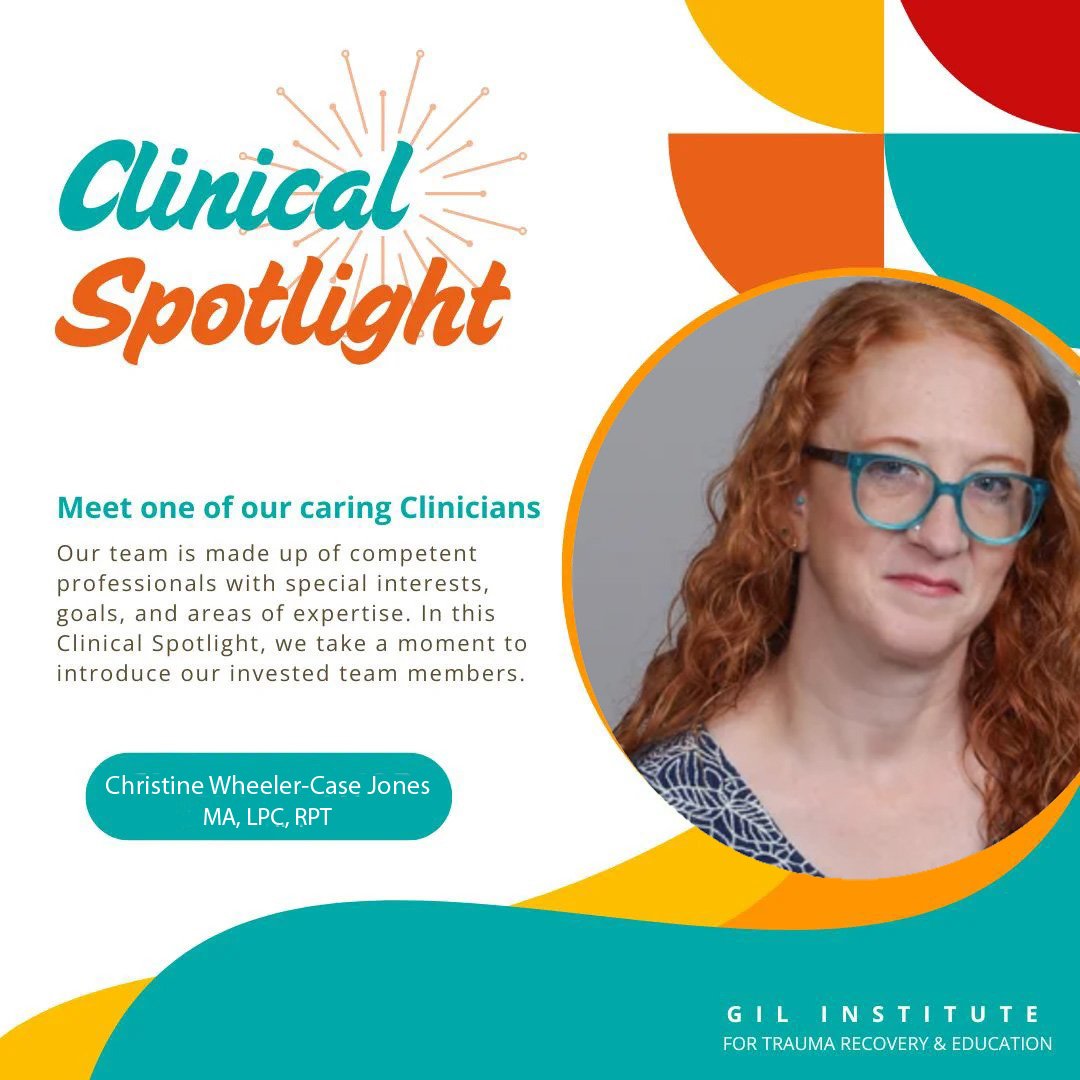CLINICAL SPOTLIGHT ON Christine Wheeler-Case Jones
1. What’s your earliest memory of wanting to become a therapist? Was this something you always knew, or did something happen that contributed to your desire to be of help to others?
I first became interested in being a therapist around the age of 16 or 17 when I read Mary Pipher’s book "Reviving Ophelia.” It talked a lot about teenage girls and the rise in depression, eating disorders, drug use, etc. I originally thought I wanted to work with adolescents and young adults, never suspecting I’d develop a focused interest in working with very young children. After taking a few child psychology classes in college, I became increasingly more interested, and after college, I ended up getting my first job in the field at an after-school day treatment program and began working with kids from Kindergarten through High School. I absolutely loved this job and then decided children would be my focus from that point on. This motivated me to complete my practicum in a day treatment program at an elementary school where I began to gain a huge interest in play therapy.
2. What specifically led you to obtain the licensure you got? Was there something in particular that you believed that your licensure could allow you to do?
I chose to be a Licensed Professional Counselor (LPC) and obtained my Master’s in Professional Counseling. I knew I eventually wanted to work in private practice and always preferred psychology over my sociology classes.
3. At what point did you develop an interest in trauma work? Again, what led to that interest, and how did you go about preparing yourself to become trauma-informed?
I had always been interested in trauma and play therapy. Several of my jobs in the past helped me become more trauma informed, including working at residential centers, group homes, and doing intensive in-home services through the Attachment and Trauma Center in Richmond, VA. Additionally, working at Childhelp probably advanced my career the most with trauma work, attachment, and using expressive therapies (art, recreational therapy, equine therapy, music therapy).
4. What service are you providing that you are excited to provide to children and families?
I currently provide individual services to children, primarily 12 and younger. I incorporate family play therapy sessions as well, though my primary focus is working directly with the child. I use child-centered play therapy, and incorporate Sandtray, Digital Play Therapy, Theraplay techniques, Lego-Based Play Therapy, and Internal Family Systems, to name a few relevant approaches in my toolbox.
5. Say a little about your interest in working with expressive therapies, (eg, sand therapy, play and art therapies) and why you believe it’s important to do?
I have had two jobs that have allowed me to learn about and utilize expressive therapies. The first one was at a psychiatric hospital, Virginia Treatment Center for Children. I was able to attend some of the art, occupational, and recreational therapy groups with my clients as well as Drum Circle sessions. Later when I worked at Childhelp, I was exposed to a broad sampling of expressive based therapies.
6. How long have you been at Gil Institute? And please say a few words about your experience working with like-minded colleagues?
I have been working at the Gil Institute since September of last year (2024). However, my dream to work with Eliana Gil occurred in 2008 after hearing her speak at a conference. I was determined to become a Registered Play Therapist, and accomplished that goal. I love seeing how much play can be healing to both kids and adults. I also love being around therapists that love play therapy as much as I do. Everyone at the Gil Institute is so passionate about their work and extremely knowledgeable as well.
7. What are you looking forward to in terms of professional growth in the next few years?
In the next few years, I would like to be trained in EMDR, FirstPlay, and Autoplay. I’d also like to seek out being a supervisor and a Registered Play Therapist-Supervisor. And lastly, maybe be published again.











